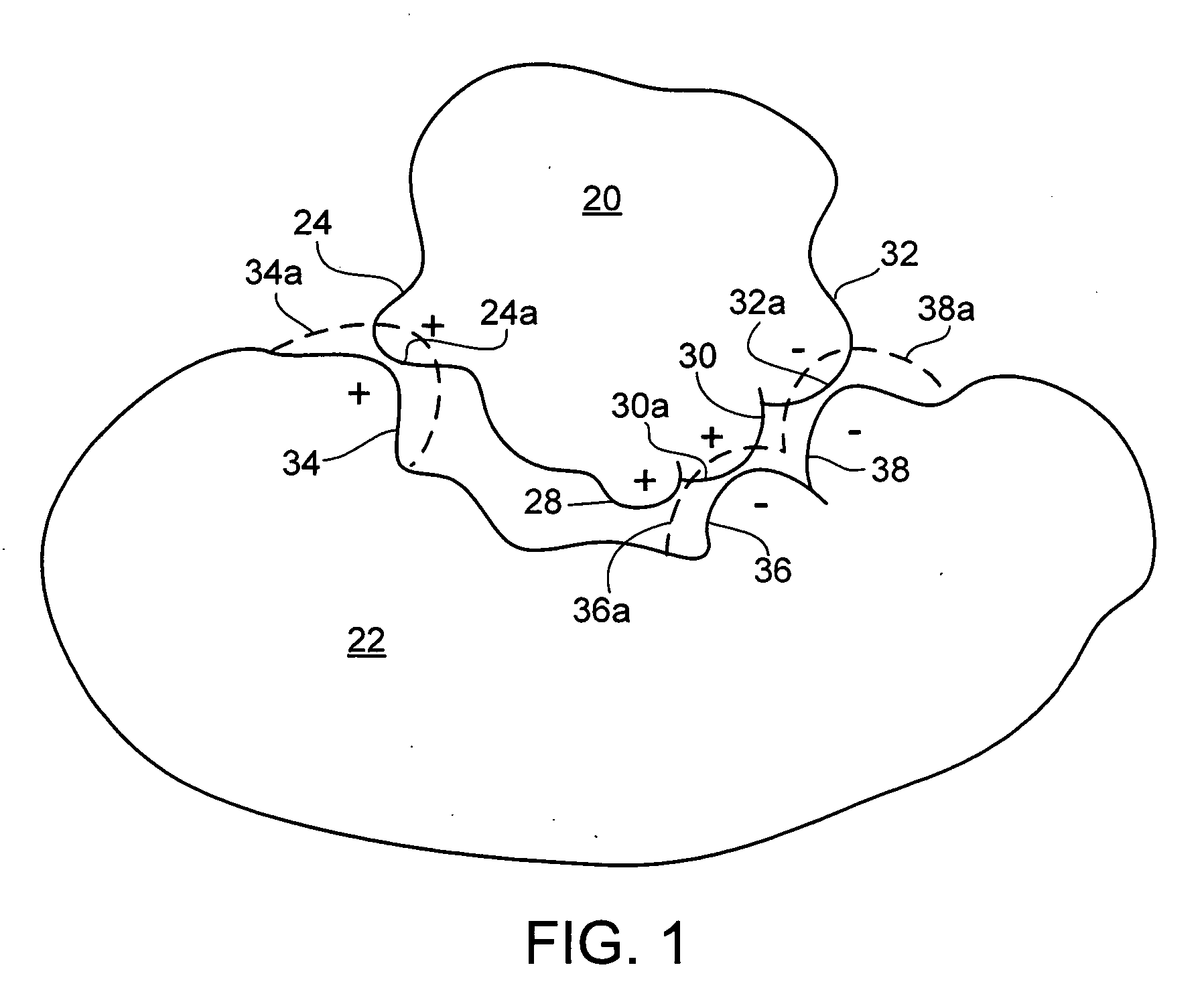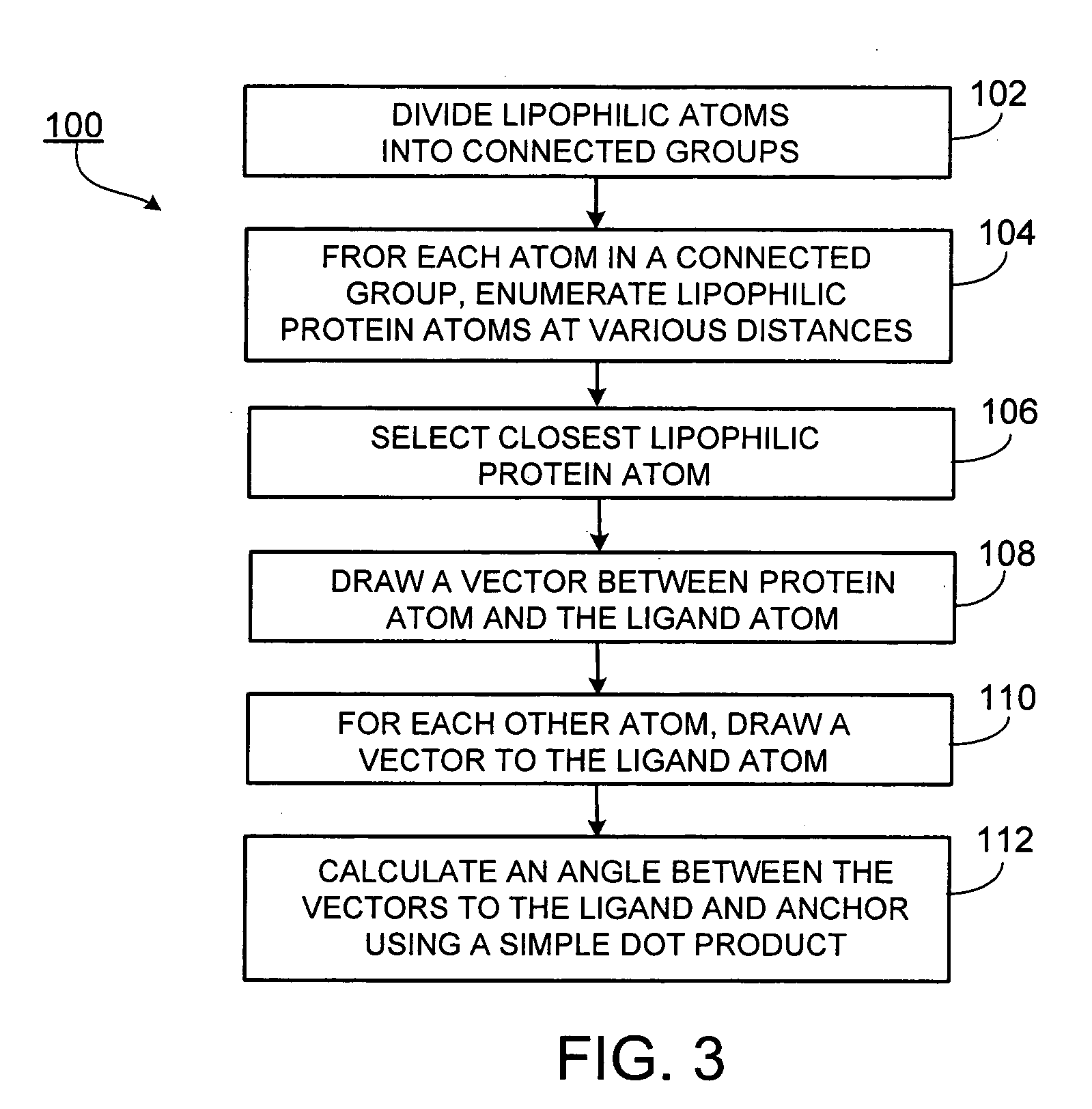Predictive scoring function for estimating binding affinity
a scoring function and prediction function technology, applied in the field of prediction scoring functions for estimating binding affinity, can solve the problems of unsatisfactory desired accuracy and robustness of the currently available scoring functions, and achieve the effects of enhancing binding affinity, facilitating the design of new, and enhancing binding affinity
- Summary
- Abstract
- Description
- Claims
- Application Information
AI Technical Summary
Benefits of technology
Problems solved by technology
Method used
Image
Examples
Embodiment Construction
[0058] As shown in FIG. 1, a block diagram of an exemplary molecular interaction geometry includes a first molecular entity 20 and a second molecular entity 22. In some cases, the first molecular entity 20 can be a drug candidate molecule (i.e., ligand), and the second molecular entity 22 can be a protein. The first molecular entity 20 includes atoms 24, 28, 30 and 32, with respective electrostatic charges (or partial charges) of positive, positive, positive, and negative. The second molecular entity 22 includes atoms 34, 36 and 38, with respective electrostatic charges (or partial charges) of positive, negative, and negative. Entity 20 is considered to be docked with entity 22. A protein 22-ligand 20 binding affinity, given as an input the docked structure shown in FIG. 1, can be calculated using a scoring function. A scoring function provides a way to calculate the binding affinity of a ligand in a protein receptor, given a sufficiently accurate structure of the complex. The calcu...
PUM
 Login to View More
Login to View More Abstract
Description
Claims
Application Information
 Login to View More
Login to View More - R&D
- Intellectual Property
- Life Sciences
- Materials
- Tech Scout
- Unparalleled Data Quality
- Higher Quality Content
- 60% Fewer Hallucinations
Browse by: Latest US Patents, China's latest patents, Technical Efficacy Thesaurus, Application Domain, Technology Topic, Popular Technical Reports.
© 2025 PatSnap. All rights reserved.Legal|Privacy policy|Modern Slavery Act Transparency Statement|Sitemap|About US| Contact US: help@patsnap.com



